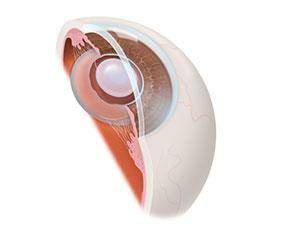(Original post from https://www.aao.org/eye-health/news/phakic-intraocular-lenses-nearsightedness )
Written by: Celia Vimont
Reviewed by: Jeffrey Whitman MD OCS
Feb. 27, 2017
 For people who are unable to have LASIK or similar laser vision correction surgery to treat their nearsightedness, there is another option: implanting an intraocular lens. A recent study found the Phakic intraocular lens (IOL) has been found safe and effective after five years.
For people who are unable to have LASIK or similar laser vision correction surgery to treat their nearsightedness, there is another option: implanting an intraocular lens. A recent study found the Phakic intraocular lens (IOL) has been found safe and effective after five years.
Phakic IOLs are clear implantable lenses that are surgically placed either between the cornea and the iris (the colored portion of the eye) or just behind the iris, without removing a person’s natural lens. Phakic IOLs allow light to focus properly on the retina for clearer vision without eyeglasses.
There are several reasons a person may not be able to have laser eye surgery to correct his or her vision, explains Jeffrey Whitman, MD, of the Key-Whitman Eye Center in Dallas. “With LASIK surgery, the more nearsighted you are, the more tissue we need to remove from the cornea. If a person is very nearsighted (or has a thin cornea), he or she may not have enough tissue to remove.”
Scarring in the cornea or an irregularly-shaped cornea (astigmatism) also may make laser eye surgery impossible, Dr. Whitman says.
The researchers followed 31 people with moderate to extreme nearsightedness or severe astigmatism for five years after they had the procedure. Before the procedure, all of the patients had 20/200 vision or worse, and only 60 percent could achieve 20/40 eyesight even with glasses or contact lenses.
Five years after having the Phakic lenses implanted, 57 percent of the eyes achieved 20/40 vision without glasses or contacts, and another 23 percent of eyes achieved it with glasses or contacts. All of the lenses remained clear after five years, and none of the people who had the surgery lost any sharpness of vision.
Phakic Lenses and Laser Surgery – What’s the Difference?
The Phakic implant procedure is more invasive than laser surgery, which is performed on the outside of the eye. “Intraocular surgery has been shown to be very safe, but it still comes with higher risk than laser surgery,” Dr. Whitman says.
Laser surgery and Phakic lenses are similar in terms of effectiveness, as “both can produce very close to 20/20 vision,” he says. The Phakic procedure is quick – typically about 15 minutes per eye – but the cost is steep, running about $4,000 per eye, compared with $1,500 to $3,000 per eye for laser surgery.
After Phakic lens surgery, patients usually put in eye drops for two to three weeks, compared with a week to 10 days of drops after laser surgery.
If you are considering Phakic lens surgery, look for an eye surgeon who has done a number of the procedures already, Dr. Whitman advises. “It should be done in an outpatient surgery center, to minimize risk of infection.”
Phakic IOLs are used for nearsightedness, farsightedness and astigmatism in Europe. In the United States, laser surgery can be used for all three conditions but Phakic lenses are approved only to treat nearsightedness, Dr. Whitman says.


